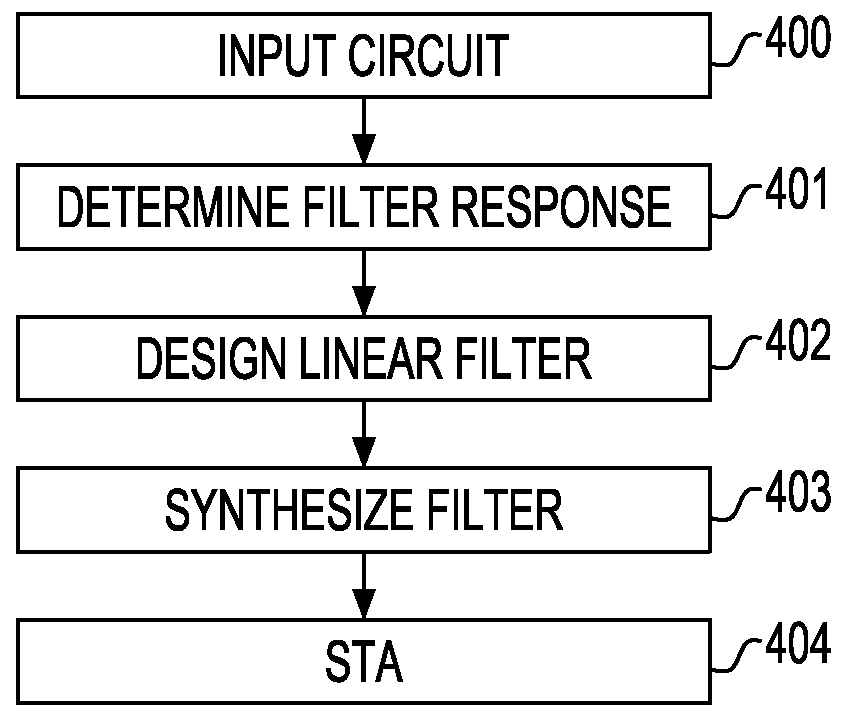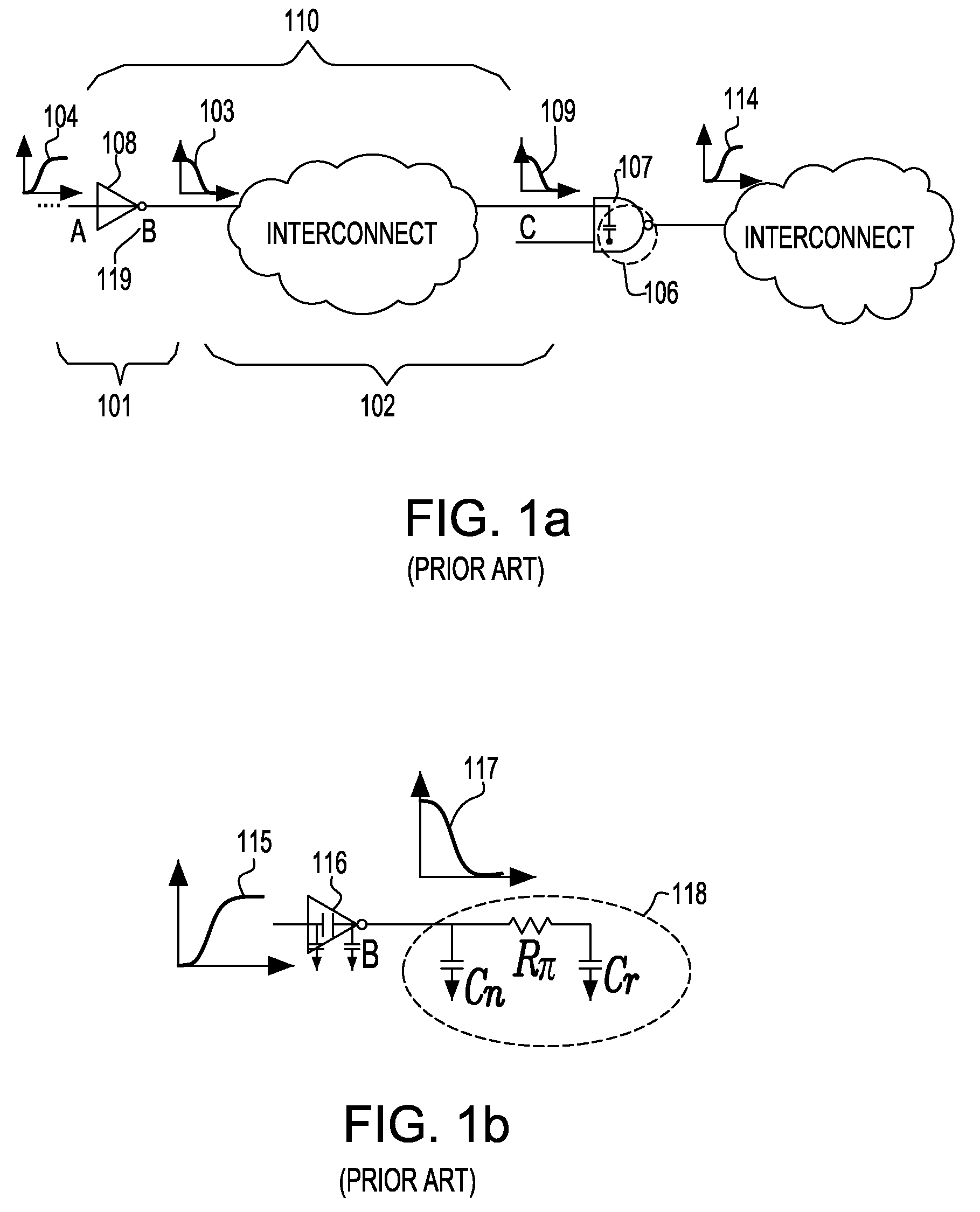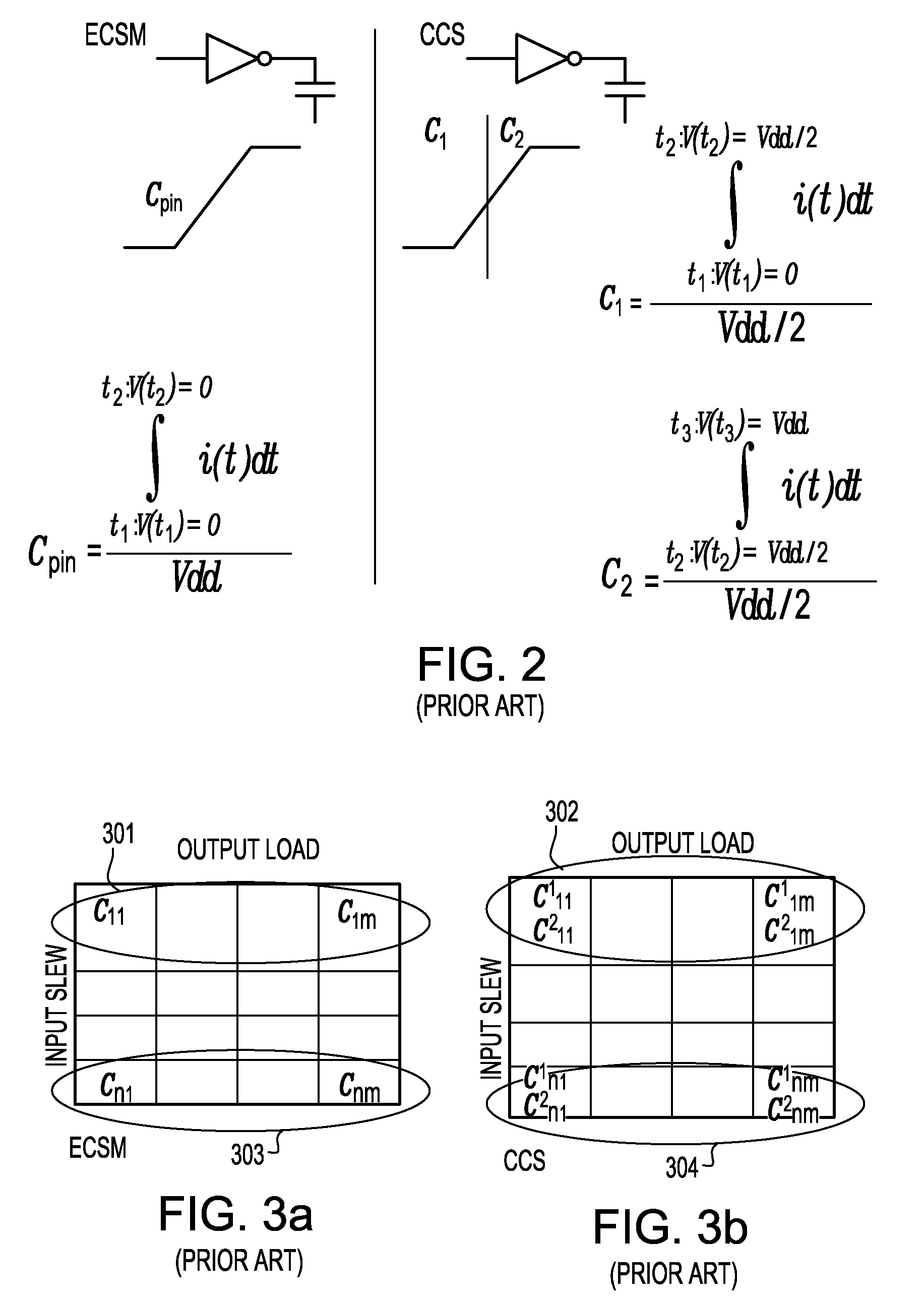Method of modeling and employing the CMOS gate slew and output load dependent pin capacitance during timing analysis
a technology of cmos gate and slew, applied in the field of design automation, can solve the problems of significant interconnect resistive parasitics, significant input-output errors, and approximating interconnect load by lumped capacitance susceptible to errors, and achieve the effect of high-quality models
- Summary
- Abstract
- Description
- Claims
- Application Information
AI Technical Summary
Problems solved by technology
Method used
Image
Examples
Embodiment Construction
[0027]The present invention and the various features and advantageous details thereof are explained more fully with reference to the non-limiting embodiments that are illustrated in the accompanying drawings and detailed in the following description. Descriptions of well-known components and processing techniques are omitted so as to not unnecessarily obscure the present invention in detail.
Problem Statement
[0028]Referring back to prior art FIGS. 1a-1b, the delay 101 of a CMOS gate 108 depends on the loading at the output pin 119 of the CMOS gate. The gate input-pin capacitance 106 at each sink of the interconnect network connected to the pin 119 is required to obtain this loading. In the case of a constant pin capacitance, this capacitance is advantageously used to compute the effective loading of the net between 119 and 106. However, in the case of a slew and output load dependant pin capacitance, the input pin capacitance at pin 106 of the fan-out gate 107 requires the transition...
PUM
 Login to View More
Login to View More Abstract
Description
Claims
Application Information
 Login to View More
Login to View More - R&D
- Intellectual Property
- Life Sciences
- Materials
- Tech Scout
- Unparalleled Data Quality
- Higher Quality Content
- 60% Fewer Hallucinations
Browse by: Latest US Patents, China's latest patents, Technical Efficacy Thesaurus, Application Domain, Technology Topic, Popular Technical Reports.
© 2025 PatSnap. All rights reserved.Legal|Privacy policy|Modern Slavery Act Transparency Statement|Sitemap|About US| Contact US: help@patsnap.com



